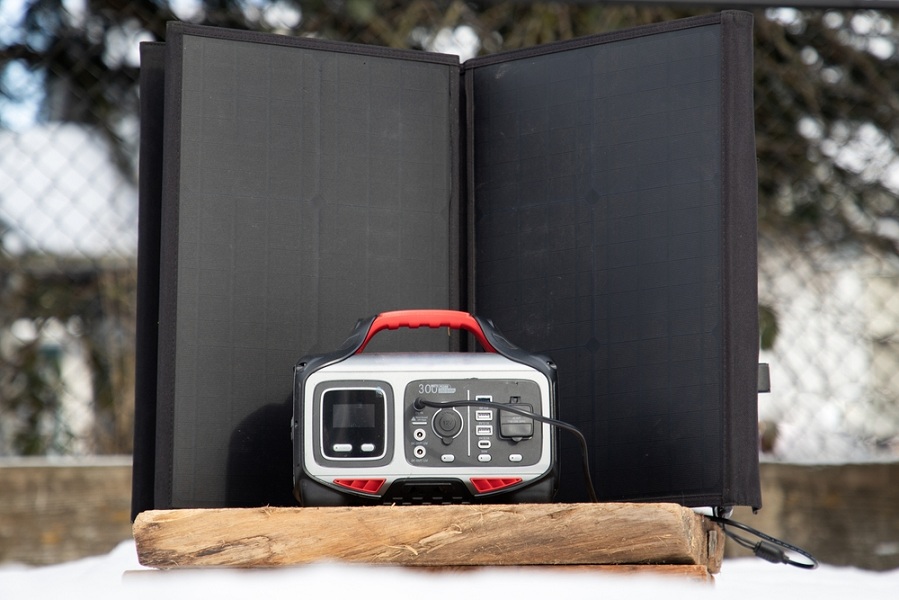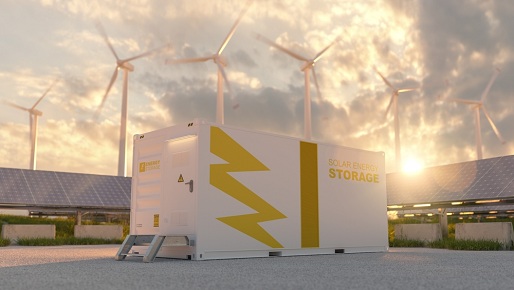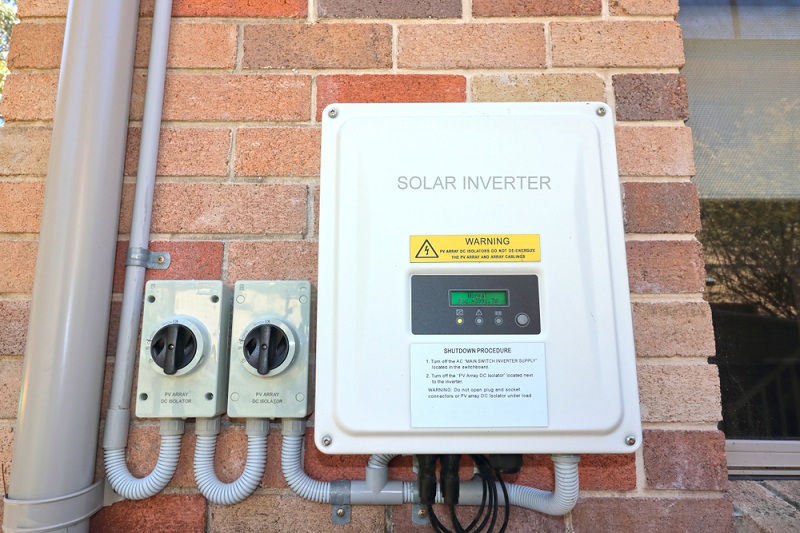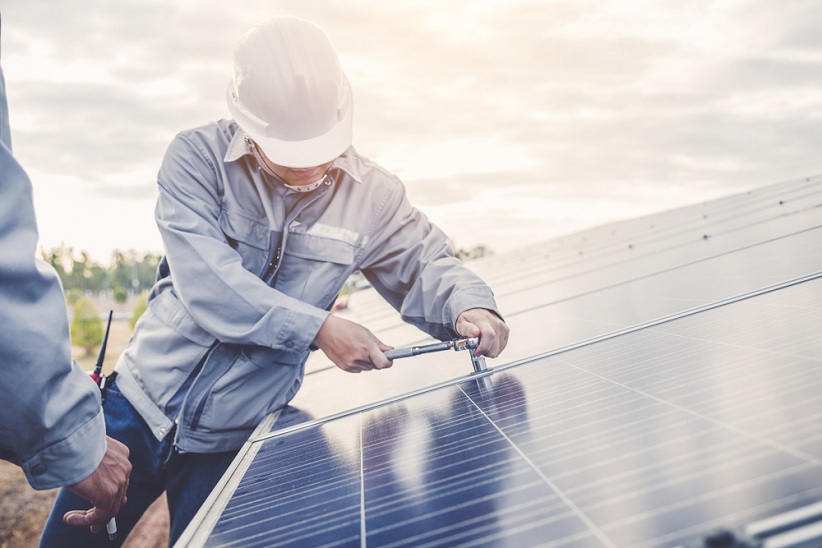You've installed some pretty cool solar panels on your roof, and now you're generating quite a bit of power yourself. You're saving lots of energy and you feel good about yourself for doing so.
One day, a big tree fell on your house during a strong wind and the electricity went out. Will you be able to use your fridge when the morning sun comes up? Not likely.
If you have solar power installed on your roof, chances are good you're hooked up to the electricity grid in your region. It means that you use electricity during off-peak hours, and when your solar panels aren't producing enough energy for your needs.
When your solar panels generate more energy than you use, you send excess electricity back into the grid.
Most residential solar systems are built to automatically shut off when there’s an electrical outage so they don't feed any extra electricity back into the grid.
After all, you shouldn't allow your solar panel system to be the cause of injuries to utility workers who encounter live voltages from fallen electricity lines.
Why would you want solar panels on roofs if they aren't generating any energy? There has to be a solution for keeping the lights on.
What to do with batteries, which store electricity for use at night? Or prevent solar energy from reaching the grid? Keep reading to get the answer to these questions.
Why don’t solar panels work in a blackout?
Most people with solar panels in their houses have a “grid-tied solar system,” meaning the panels are wired into an inverter.
The inverter converts DC power into AC power so that you can plug it into an outlet. It connects to the main electrical panel in your house and to a special electronic meter that measures both electricity used by the utility provider and electricity generated by your solar panels. Grid-tied systems don't require batteries for power storage.
That’s one reason why home solar people often say “the electric utility is your battery.“ When your solar system generates excess electricity during daylight hours, you send it back to the utility under net metering, but at night, you still require electricity from the utility.
If you balance this equation just right, you can get a power bill near zero dollars.
If there is an outage, a typical grid-tie system automatically shuts off so that extra electricity won't be used if something goes wrong. It's a safeguard designed to keep the linemen safe by preventing them from using too much electricity during repairs.
However, that also means your house won't receive any solar energy, either. If there’s no light during a blackout, then your solar panels won't produce any electricity. However, if you've got batteries or another source of energy storage available, then they could help keep your lights on.
How does solar energy help you to survive an electrical blackout?
To keep your house up and going during an outage, there are several options available to you:
1. Buy a backup gas generator

Solar energy enthusiasts don't usually recommend using firewood for electricity generation, but one of the best ways to ensure you have backup power in case of an outage is by buying a portable generator system.
You can buy a 9,000-watt generator for less than $1,500, including installation costs. It can power most of your house while the electric company brings back the electricity.
If you have a good backup power system setup, you'll be able to last for hours without having access to electricity. You might even be able to provide some power to your neighbors if they're experiencing an extended blackout. You won't be able to use your solar panels until the grid returns, but at least you’ll have electricity.
Drawbacks of a backup gas generator
Gas generator systems are noisy, smelly, and pollute the environment when they're used. If everyone ran their generators at the same time, wouldn't it be loud and smelly?
Also, there's always the chance of a spark causing an electrical fault and sparking a small blaze or larger one, especially if you're refilling near the hot metal components of a running generator.
There are certainly other generators available, running quietly on either natural gas or even on electricity from renewable sources, but they're usually more expensive than the basic models.
During the Texas power outage in February 2021, we saw how natural gas could also be an unreliable source of energy, especially during bad weather.
Bottom line: Generators aren't a good choice for most people except for their low price. We'll now take a closer look at some purely solar power options, starting with so-called solar generators.
2. Solar generators

There are also “solar generators“ from brands such as Renogy and GoalZero that can keep your food cold and run a space heater for just hundreds of dollars.
Remember that these portable power sources can be recharged with or without solar energy when the electricity is available, but again, they don't recharge from solar energy when the electricity isn't available unless you use the same type of special equipment used for battery storage systems.
3. Solar battery system

A solar-powered backup generator is the best way to ensure that you're never without electricity when the power fails.
However, if you want to be truly self-sufficient, there's no substitute for having a fully functional off-the-gridded home. A solar panel allows for an easy transition between grid and backup power.
There are many different types of battery systems for solar storage, including deep-cycling batteries, Tesla Powerwalls, and lithium-ion batteries.
Today, solar install companies have plenty of experience working with batteries alongside solar installations and you may be pleasantly surprised by the number and range of Powerwall alternatives available in the market.
If you want to buy a Tesla, you'll be able to get one installed by an installer who has been trained to do so.
There are a variety of battery packs available from different manufacturers including LG and Sonnen. They're comparable to Tesla's Powerwall in terms of performance and cost.
A solar plus battery installation provides uninterrupted power by “islanded” or by disconnection from the utility when there is no electricity from the utility company.
During the daytime, your little solar island charges up its battery; at nighttime, when the sun goes down, it discharges the battery. If you have enough charge left in your batteries, you could continue using them for a very long time without recharging.
4. Special solar inverters

Fortunately, there is a way to use the power generated by your solar panels without connecting them to the grid or having an energy backup system.
Two companies that manufacture special solar inverters that automatically disconnect from the utility during outages are SMA and Enphase.
SMA Sunny Boy Inverters
Most solar inverter systems include an automatic shut-down feature, but SMA Sunny Boy inverter systems can be equipped with a special circuit that lets homeowners switch over to pure solar energy after a blackout.
It can only generate up to 2,000 watts of "opportunity power" at one time, and it shuts off if the load is too high. It only operates when the sun is shining.
2000 watts may sound like a lot, but it probably isn't sufficient power for starting an AC unit. Opportunity power is meant for essential household items only. You could probably plug in your refrigerator, a lamp, a TV, and your phone to keep yourself entertained.
The total cost for both the Sunny Boy and the power outlet could be up to $1,000 more expensive than an alternative product that doesn't include a backup feature. However, if you factor in the cost over a ten-year period, then this may be an appealing choice for you.
Enphase
One of the companies working hard at making solar power available even during blackouts is Enphase.
The company's energy monitoring system works with its Microinverter technology to deliver "gridless" solar power. It means it can send electricity to your appliances directly from your solar panel when the sunlight is strong enough — even if there aren't any batteries available.
Obviously, Enphase would want people to buy their energy storage solution along with their Ensemble systems, meaning your house could run off stored solar energy at any time of the day.
If you want to spend thousands of additional bucks for Enpahse’s IQ7 microinverter and Ensemble system, you may be willing to drop another couple hundred bucks for the batteries.
Why is going off-grid not recommended?
Those who want to eliminate fossil fuels entirely and ensure that only clean power flows through their wires may be tempted to go off the grid. That's definitely an option, but it could be very expensive.
Going solar is no longer as expensive as it once was, but it's still a financial investment. Off-the-gridded setups can be quite costly.
Even if you're starting out with an off-grid solar system, it will be far more expensive than a grid-tie system. It will cost you at least several thousand dollars more just for the basic equipment.
Off-grid batteries must be capable of providing enough power for the average household over the entire duration of a typical winter storm.
You don't want to be caught without enough power during the summer, so you need to plan ahead for when you might run out of solar energy. It takes you back to where you started.


